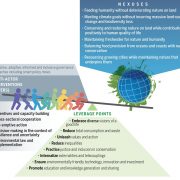
Review: Pervasive human-driven decline of life on Earth points to the need for transformative change (Science)
Plant Science Research WeeklyReading this review by Diaz et al. feels a bit like reading a bad report card. Although we know we’re failing in our role as Earth’s stewards, we don’t always want to be reminded of this. But, in this case we need to read and act on the suggestions for improvement. The authors review the findings…
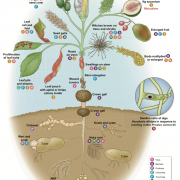
Plants make galls to accommodate foreigners: some are friends most are foes (New Phytol)
Plant Science Research WeeklyGall formation by plants is a commonly-seen phenomenon that occurs in response to foreign entities (here called “gall-inducers”) such as viruses, bacteria, fungi, nematodes, etc. In this review Harris and Pitzschke set out criteria for what is and is not a gall; by definition the gall is a developmental…
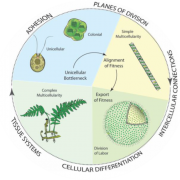
Review: The many roads to (and from) multicellularity (J. Exp. Bot)
Plant Science Research WeeklyMulticellularity is without doubt a fantastic fluke. We know that it arose independently in plants and animals, but how many times? And is there a common “predisposition” to multicellularity in the universal common ancestor? These are the questions addressed in this review by Niklas and Newman. Looking…

Rapid single-step affinity purification of HA-tagged plant mitochondria (Plant Physiol)
Plant Science Research WeeklyIn the middle part of the 20th century, cell biology leapt forward with the development of differential centrifugation methods for purifying subcellular compartments. However, these methods require large amounts of starting material and can suffer from contamination. Kuhnert et al. present a new simple…
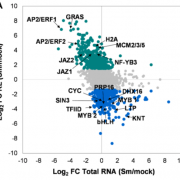
Reprogramming of root cells during nitrogen-fixing symbiosis involves dynamic polysome association of coding and non-coding RNAs (Plant Cell)
Plant Science Research WeeklyKnowing RNA abundance is nice, but in most cases protein abundance is more biologically interesting. Traubenik et al. used TRAP (Translating Ribosome Affinity Purification) to examine efficiency of translation and contributions of non-coding and alternatively spliced RNAs during the establishment…
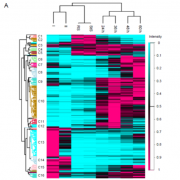
Identification of low-abundant lipid droplet proteins in seeds and seedlings (Plant Physiol)
Plant Science Research WeeklyThe ability of seeds to pack nutrients into dense stable capsules transformed plants’ and animals’ ability to thrive on land (imagine getting through your day without eating any foods derived from seeds or animals that eat seeds). Within many seeds, nutrients are packaged in lipid droplets, with…

Plant Science Research Weekly: December 20th
WWR Full PostReview: Pervasive human-driven decline of life on Earth points to the need for transformative change
Reading this review by Diaz et al. feels a bit like reading a bad report card. Although we know we’re failing in our role as Earth’s stewards, we don’t always want to be reminded of this. But,…
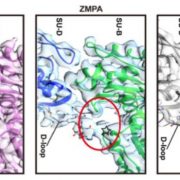
Mightier than Muscle: A Near-atomic View of Pollen Actin Filaments
Research, The Plant Cell, The Plant Cell: In a NutshellBeyond its well-known role in muscle contraction, the cytoskeletal component actin participates in many critical cellular processes. Globular actin polymerizes into thin, flexible filaments that assemble into dynamic higher-order structures, such as bundles and networks. In addition to providing mechanical…
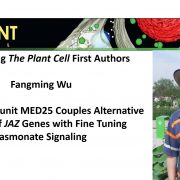
Recognizing Plant Cell authors: Fangming Wu
The Plant Cell, The Plant Cell: Author ProfilesFangming Wu, first author of Mediator Subunit MED25 Couples Alternative Splicing of JAZ Genes with Fine Tuning Jasmonate Signaling
Current Position: Assistant Professor, Institute of Genetics and Developmental Biology, Chinese Academy of Sciences, Beijing, China
Education: Ph.D. in Beijing Normal…

